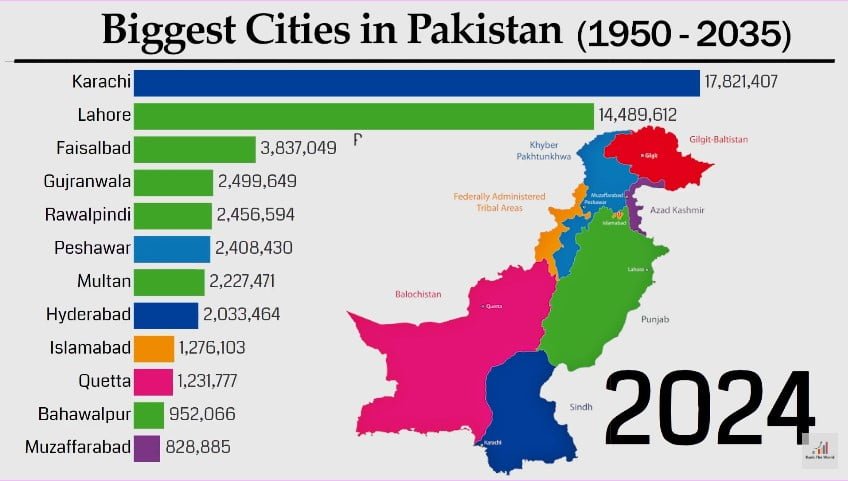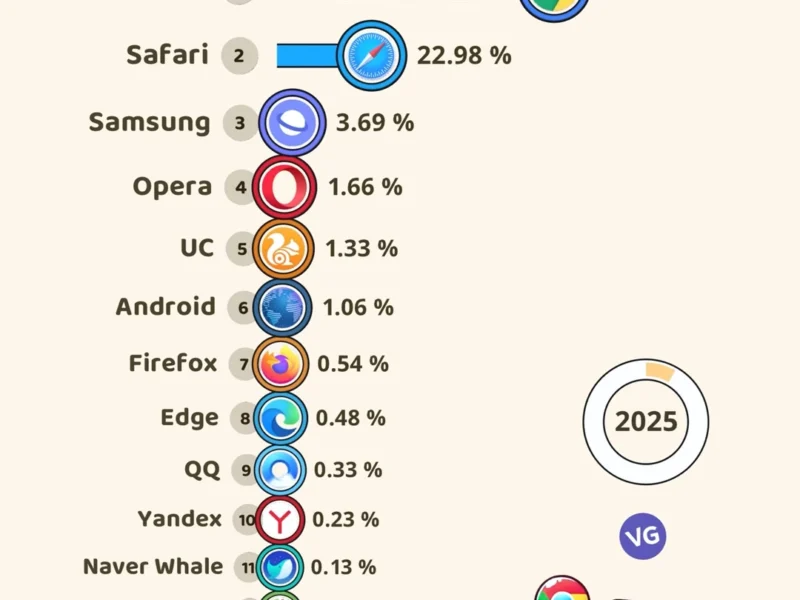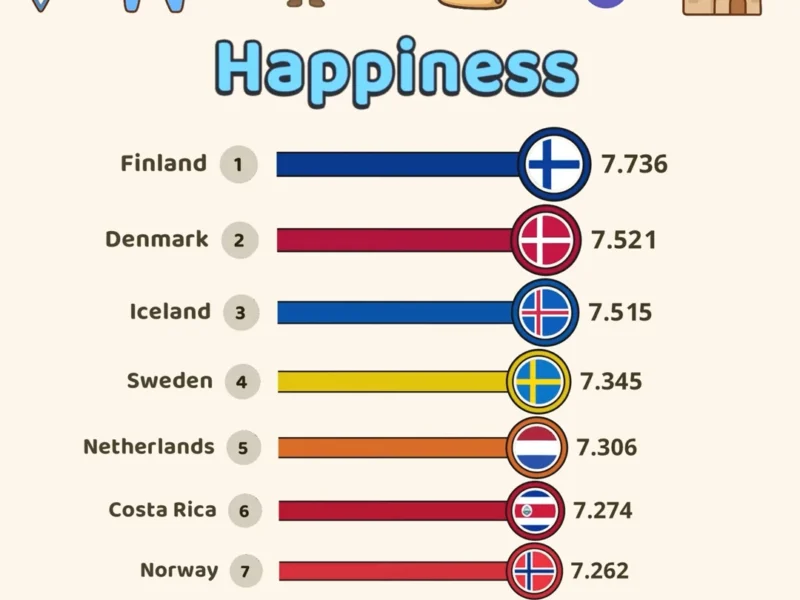Pakistan is home to over 200 million people, making it a bustling nation. Its cities are key to its economy and culture1. Karachi, the biggest city, has a population of 14,916,456, showing a 59.72% increase since 19981. Lahore, the second biggest, has grown by 113.59%, now housing 11,126,285 people1.
Cities in Pakistan by Population
| Rank | City | Population |
|---|---|---|
| 1 | Karachi | 17,821,407 |
| 2 | Lahore | 14,489,612 |
| 3 | Faisalabad | 3,837,049 |
| 4 | Gujranwala | 2,499,649 |
| 5 | Rawalpindi | 2,456,594 |
| 6 | Peshawar | 2,408,430 |
| 7 | Multan | 2,227,471 |
| 8 | Hyderabad | 2,033,464 |
| 9 | Islamabad | 1,276,103 |
| 10 | Quetta | 1,231,777 |
| 11 | Bahawalpur | 952,066 |
| 12 | Muzaffarabad | 828,885 |
This article looks at the variety of cities in Pakistan. It talks about their growth, challenges, and importance in the country’s development.
Key Takeaways
- Pakistan has a mix of big cities and smaller ones.
- Karachi is the biggest city, with over 14.9 million people as of 2017.
- Lahore is the second biggest, with a population of over 11.1 million.
- Together, the top 100 cities in Pakistan had nearly 60 million people in 2017, a 57.87% increase from 1998.
- Punjab has 58 of the top 100 most populous cities in Pakistan.
Overview of Pakistan’s Population Distribution
Population of Biggest Cities in Pakistan (2024)
Source: Image data (2024 projection)
Pakistan’s population is mainly found in its big cities. These cities make up a big part of the total population2. The 2017 census showed Pakistan has two megacities, ten million-plus cities, and 100 cities with over 100,000 people2. Most people (61%) live in rural areas, while 39% are in cities2.
Major Cities and Their Populations
Karachi is Pakistan’s biggest city, with 14,884,402 people as of the latest count3. Lahore is second, with 11,119,985 people3. Faisalabad comes third, with 3,210,158 people3. Other big cities include Rawalpindi, Multan, and Peshawar, each with a lot of people3.
Rural vs. Urban Population Breakdown
More people live in rural areas than in cities in Pakistan2. In 2017, 65% lived in the countryside, and 39% in cities2. This has been the case for a long time, with city dwellers growing from 25.3 million in 1981 to 75.7 million in 20172. Knowing about this helps policymakers deal with the fast growth of cities.
In Sindh, the move to cities was especially strong, with 51.9% living in urban areas in 20172. This is different from places like Balochistan, which is more rural2.
“Understanding the population distribution and the growth of major cities is crucial for policymakers to address the challenges associated with rapid urbanization.”
Karachi – Pakistan’s Largest Megacity
Karachi is Pakistan’s biggest city and the financial and commercial heart. It has over 20,382,881 people as of 2023. This makes it the 12th biggest city globally5. The city covers 3,527 km2, with a density of 5,779 people per square kilometer5.
Karachi is key to Pakistan’s economy. Its GDP in 2021 was over $200 billion (PPP), with a formal economy of $190 billion5. It brings in 35% of Pakistan’s taxes and about 25% of the GDP5. The city’s ports handle 95% of Pakistan’s foreign trade, making it the top industrial and financial center5.
Despite its economic strength, Karachi has faced challenges. Ethnic conflicts led to some businesses moving away6. But, crime rates dropped after a 2013 crackdown by the Pakistan Rangers5. Now, it’s famous for its fashion industry, hosting Karachi Fashion Week since 20095.
The government focuses on Karachi’s growth, tackling issues like infrastructure, housing, and the environment5. As Pakistan’s biggest city and economic driver, Karachi’s success is vital for the country’s future5.
| Metric | Value |
|---|---|
| Population (2023) | 20,382,881 |
| Rank in Pakistan | 1st |
| Rank in the World | 12th |
| Metropolitan Area | 3,527 km² |
| Metropolitan Density | 5,779/km² |
| GDP (2021) | $200 billion (PPP) |
| Formal Economy (2021) | $190 billion |
| Tax Revenue Share | 35% |
| Contribution to GDP | 25% |
| Industrial Output | 30% |
| Foreign Trade | 95% |
Karachi is a city of contrasts, with its economic power and cultural life facing big challenges. As Pakistan’s largest city, its future will greatly affect the country’s growth and success5.
Lahore and Other Million-Plus Cities
Lahore is Pakistan’s second-biggest city, with over 11.1 million people as of 20247. It’s the capital of Punjab and a key spot for culture, education, and business. Pakistan has nine more cities with over a million people, including Faisalabad, Rawalpindi, and Gujranwala7. These cities are vital for the country’s growth and innovation.
Faisalabad, Rawalpindi, and Multan
Faisalabad had 3,800,193 people in 20247, and Gujranwala had 2,479,0587. Rawalpindi is close to Islamabad and is also a big city7. Multan is famous for its culture and is growing fast7. These cities are changing Pakistan’s urban scene and helping the economy grow.
Interestingly, Islamabad, Pakistan’s capital, isn’t on the list of million-plus cities7. This means Islamabad is important for government but hasn’t reached a million people yet.
| City | Population (2024) | Population Growth Rate (2023-2024) |
|---|---|---|
| Lahore | 14,407,074 | 3.06% |
| Karachi | 17,648,555 | 2.39% |
| Faisalabad | 3,800,193 | N/A |
| Gujranwala | 2,479,058 | N/A |
Other top cities like Tokyo and Delhi have different growth rates and numbers7. This shows how varied urban growth is worldwide and the unique challenges each place faces7.
“Lahore has lost a significant proportion of its tree cover over the past 15 years due to infrastructure development, and the city aims to generate 30 percent of its energy needs via renewable sources by 2030.”
Pakistan’s cities face big challenges like housing, jobs, and healthcare for their growing population9. Solving these issues is key for the sustainable growth of cities and Pakistan’s economy978.
cities in pakistan by population
Pakistan is a South Asian nation with a mix of thriving cities. These cities shape the country’s changing population10. The 2017 census shows the top 100 most populous cities spread across the country. Most are in Punjab.
Top 100 Most Populous Cities in the 2017 Census
This data gives us a clear view of Pakistan’s urban growth. It shows the country’s growing cities and how the population is spread10. The list includes two megacities, ten million-plus cities, and 88 cities with populations between 100,000 and 1 million.
- Karachi: 14,910,35210
- Lahore: 11,126,28510
- Faisalabad: 3,203,84610
- Rawalpindi: 2,098,23110
- Gujranwala: 2,027,00110
- Peshawar: 1,970,04210
- Multan: 1,875,55310
- Hyderabad: 1,733,44110
- Islamabad: 1,015,00010
- Quetta: 1,001,20510
The top 100 cities show Pakistan’s urban diversity and energy10. They range from big cities to smaller ones. This data helps us understand Pakistan’s growth and challenges in urban development.
“The rapid growth of Pakistan’s cities highlights the need for comprehensive urban planning and infrastructure development to cater to the needs of the country’s burgeoning population.”
Pakistan’s move towards urbanization is significant. These cities are key to the country’s economic growth and future11. This data will help policymakers and urban planners tackle the challenges and opportunities of Pakistan’s cities101112.
Provincial Breakdown of Major Cities
Pakistan’s major cities spread across four provinces and the Islamabad Capital Territory. Punjab leads with 58 of the top 100 cities by population13. Sindh has 22, Khyber Pakhtunkhwa 11, and Balochistan 6. The rest are in Azad Kashmir and Islamabad3. This shows the economic and demographic gaps between provinces, calling for balanced growth.
Cities in Punjab
Punjab, the most populous province, hosts many big cities3. Lahore, its capital, is Pakistan’s second-biggest with 11,119,985 people in 20173. Faisalabad, Rawalpindi, and Multan also have over 2 million people each.
Major Cities in Sindh
Sindh is home to Pakistan’s biggest city, Karachi3. With 14,884,402 people in 2017, it’s the country’s largest3. Hyderabad and Sukkur are also key cities here.
Biggest Cities in Khyber Pakhtunkhwa
Khyber Pakhtunkhwa has fewer major cities than Punjab and Sindh3. Yet, it boasts Peshawar, the third-biggest city with 1,970,042 people in 20173. Mardan and Abbottabad are also notable.
| Province | Top Cities by Population (2017 Census) |
|---|---|
| Punjab | Lahore (11,119,985), Faisalabad (3,204,726), Rawalpindi (2,098,231), Multan (1,871,843) |
| Sindh | Karachi (14,916,456), Hyderabad (1,733,441), Sukkur (499,042) |
| Khyber Pakhtunkhwa | Peshawar (1,970,042), Mardan (365,399), Abbottabad (259,856) |
| Balochistan | Quetta (1,001,205), Turbat (336,519), Loralai (153,602) |
The spread of major cities shows Pakistan’s economic and demographic gaps3. Targeted development is key for future growth and prosperity3213.
Rapid Urban Growth and Its Challenges
Pakistan’s cities have grown fast in recent years, thanks to more people and people moving from rural areas to cities14. By 2017, about 40 percent of Pakistan’s people lived in cities, up from 17 percent in 1951. By 2030, over half of Pakistan’s 250 million people will live in cities1415.
This fast growth has brought many challenges, like not enough infrastructure, homes, clean air, and water16. In Karachi, Orangi town is one of the world’s biggest slums, housing 2.4 million people16. Karachi is also one of the 10 least livable cities in the world16.
Many people in Pakistan live in slums without government help, making their lives hard16. Around a quarter of the world’s city dwellers live in slums, and this number is growing16. Cities in Pakistan make up 78% of the country’s GDP, with many jobs in growing fields like tech15.
But, growing cities bring challenges in providing basic services and threaten sustainable growth15. In Karachi, most homes are in areas that are officially developed for a small part of the population, while many more people live in areas that grew up without official planning15.
To tackle the rapid urbanization in Pakistan, we need good city planning, more public services, and sustainable policies141615.
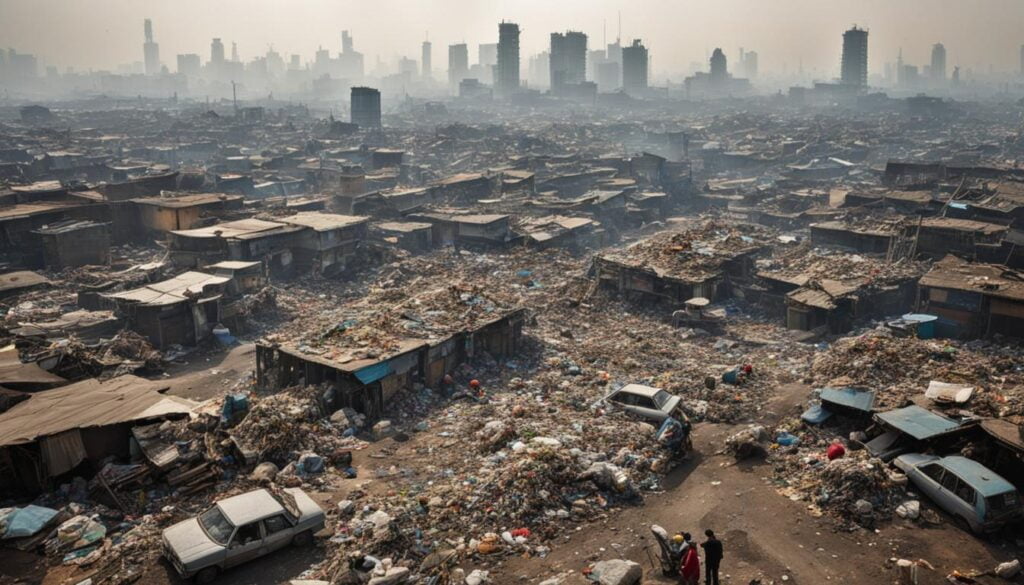
“Karachi contributes 55 percent to Pakistan’s GDP, with Islamabad at 16 percent and Lahore at 15 percent.”14
The problems of rapid urbanization in Pakistan are complex. Solving them will need effort from many groups, including policymakers, city planners, and community groups141615.
| Indicator | Value |
|---|---|
| Urban economy annual growth rate since FY08 | Almost 4.5% |
| Rural economy annual growth rate since FY08 | Less than 2.5% |
| Share of agriculture in urban employment (FY18) | 41.3% |
| Share of agriculture in urban employment (1994) | 50% |
| Labour productivity growth (1980s) | 4.2% yearly |
| Labour productivity growth (since 2007) | 1% yearly |
| Value-added manufacturing as % of GDP (2016) | 12.8% |
| Value-added manufacturing as % of GDP (2005) | 18.6% |
| SMEs employment share | Around 80% of non-agricultural workforce |
| SMEs contribution to GDP | Approximately 40% |
| Urban housing shortage (2015) | Approximately 4.4 million units |
The impact of urbanization in Pakistan is both good and bad. Cities help the economy grow but also face big challenges in infrastructure, homes, and the environment141615.
Comparing Past and Present Population Data
A look at the 1998 and 2017 censuses shows big changes in Pakistan’s cities17. The country’s population grew by nearly 60% during this time. Cities like Islamabad and Lahore almost doubled in size17. Other cities, such as Rawalpindi and Hyderabad, also saw big increases, showing the fast change in urban Pakistan17.
Population Changes from 1998 to 2017
In 1998, Pakistan had 132.35 million people, which grew to 207.77 million by 2017, a 57% increase17. The country’s population grew by 2.4% each year on average17. Rural areas grew by 2.23%, while cities grew faster at 2.70%17. Men made up 51% of the population, with 106.45 million, and women made up 49% with 101.32 million17. There were 10,418 transgender people counted17.
Punjab was the most populous province in 2017, with 110 million people17. Islamabad had the highest growth rate at 4.91%17. The number of people living in cities went up by 36.38% in 201717. Sindh was the most urbanized province, with 52.02% living in cities, and Punjab’s urban population grew from 31.27% to 36.71%17.
The population of major cities in Pakistan grew from 23.41 million to 40.92 million, a big jump17. Karachi became even more populous, with 14.91 million people in 2017, up 59.8% from 199817. Lahore’s population also increased a lot, by 116.3%, reaching 11.12 million17. But Islamabad’s city population share went down from 65.72% to 50.58%17.
These changes have big implications for policymakers and city planners in Pakistan17182. Understanding how cities are growing is key to managing this growth and meeting the needs of the growing cities17182.
| Indicator | 1998 | 2017 | Percent Change |
|---|---|---|---|
| Total Population | 132.35 million | 207.77 million | 57% |
| Annual Population Growth Rate | – | 2.4% | – |
| Rural Population Growth Rate | – | 2.23% | – |
| Urban Population Growth Rate | – | 2.70% | – |
| Male Population | – | 106.45 million | – |
| Female Population | – | 101.32 million | – |
| Transgender Population | – | 10,418 | – |
| Punjab Population | – | 110 million | – |
| Sindh Population | – | 47.8 million | – |
| Islamabad Capital Territory Growth Rate | – | 4.91% | – |
| Urban Population Share | 36.38% | 52.02% | 43.2% |
| Major Cities Population | 23.41 million | 40.92 million | 74.8% |
| Karachi Population | 9.34 million | 14.91 million | 59.8% |
| Lahore Population | 5.14 million | 11.12 million | 116.3% |
| Islamabad Urban Population Share | 65.72% | 50.58% | -23% |
Emerging Cities and Population Hubs
Pakistan’s big cities like Karachi and Lahore are still leading the way, but new cities are growing fast19. Places like Gujranwala, Peshawar, Bahawalpur, and Sargodha are getting more people, showing Pakistan’s growth19. These cities are becoming key for the country’s economy and social growth, offering new chances for jobs and economic growth.
These cities are growing fast, showing Pakistan’s changing urban scene19. Gujranwala has grown from 1.98 million in 2011 to about 2.8 million now19. Peshawar, the capital of Khyber Pakhtunkhwa, has also seen a big increase, from 1.97 million to around 2.4 million19. These cities are drawing people from rural areas and attracting investments, making Pakistan’s development more spread out.
The growth of these up-and-coming cities brings both good and bad news for Pakistan20. They could help spread out economic growth and ease the load on big cities, creating new spots for innovation and business20. But, they also bring challenges like needing better infrastructure and resources, which requires careful planning and investment for a sustainable future20.
As Pakistan keeps growing, these fastest growing cities and new urban centers will shape its future19. Leaders and planners need to make the most of these cities, balancing growth with services, homes, and protecting the environment20. This way, Pakistan can use its diverse cities to drive sustainable growth and better life quality for everyone.
“The rise of these new urban centers is a testament to Pakistan’s dynamic urbanization process, presenting both opportunities and challenges for the country’s future development.”
Role of Megacities in Pakistan’s Economy
Pakistan’s biggest cities, like Karachi and Lahore, are key to the country’s economic growth. They are centers for trade, industry, and finance. Karachi is estimated to generate around 15% of the country’s GDP21. Cities like Lahore also play big roles in boosting the economy.
Urbanization is happening fast in Pakistan. By 2008, 36% of Pakistan’s people lived in cities, making it the most urbanized in South Asia21. It’s growing at three percent a year, the fastest in South Asia22. Soon, nearly half of Pakistan’s 180 million people will live in cities22.
This growth changes Pakistan’s economy a lot. Lahore’s population will jump from 7 to 10 million by 202522. Karachi’s population is set to hit 19 million by 202522. These cities will become even more important for Pakistan’s economy.
Contribution of Major Cities to GDP
Pakistan’s cities are vital for its economy. In 1998, 32.52% of Pakistanis lived in cities, rising to 36.38% in 201721. This urban growth has boosted the economy a lot. The urban population is expected to hit 50% soon22.
Sindh is the most urban province, with 52.02% living in cities, up from 48.75% in 199821. This shows how important cities like Karachi are to Pakistan’s economy.
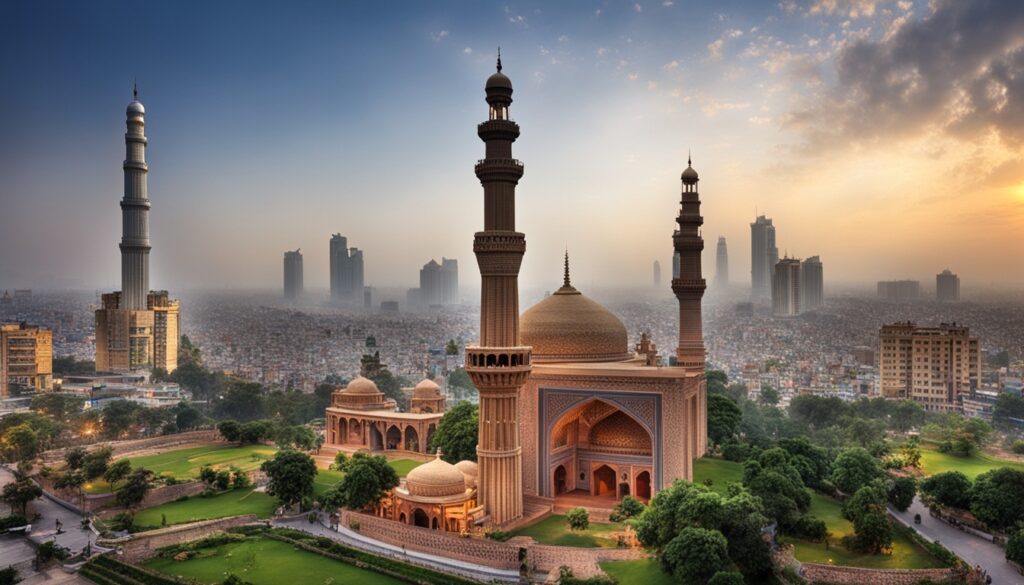
As Pakistan gets more urban, cities will become even more crucial. The economic importance of cities in pakistan and their contribution to Pakistan’s GDP will increase. Policymakers should focus on these cities to drive growth and prosperity21229.
Infrastructure Development in Urban Centers
Pakistan’s cities are growing fast, but they face big challenges with their infrastructure23. This is making it hard for the country to keep up with urban growth23. With more people moving to cities, the need for better infrastructure is getting more urgent.
One big issue is the poor transport system in cities24. Making it better could boost household incomes by over 14% a year24. Also, not having reliable electricity costs about $4.5 billion a year, which is 1.7% of Pakistan’s GDP24.
The government is working on fixing these problems with new projects23. They’re improving transport, power, and building more homes that people can afford23. They also have plans for the next five years to help with these issues23.
Groups like UN-Habitat are helping Pakistan improve its cities23. From 2008 to 2013, they gave $78,984,291 to 43 projects23. These projects focus on making communities stronger and caring for the environment23.
But, Pakistan still has a long way to go24. It needs $124 billion for infrastructure by 2040, more than its total debts24. The country needs to keep investing and planning well to support its growing cities and economy24.
| Key Infrastructure Indicators | Statistic |
|---|---|
| Share of urban population in Pakistan (2021) | 41.7%25 |
| Annual rate of urban change | 2.79%25 |
| Contribution of urban areas to GDP | 80%25 |
| Projected population growth of Lahore by 2035 | 17.18 million25 |
| Projected population of Karachi by 2035 | 23.17 million25 |
| Housing deficit in major cities | 5 million units25 |
| Percentage of urbanites living in slums | Close to 50%25 |
| Pakistan’s ranking in basic infrastructure | 69th out of 125 countries25 |
“Addressing the infrastructure deficiencies in Pakistan’s cities is crucial for improving the quality of life for urban residents and supporting the continued economic development of the country.”
Environmental Impact of Urbanization
Pakistan’s cities are facing big environmental problems because of rapid growth26. More people, industries, and cars have made the air quality worse, especially from leaded fuel emissions26. This pollution is harmful, causing health issues like lung cancer and mental problems26.
Many cities lack good waste and water management, making things worse26. In Karachi, industrial waste has polluted the water, hurting marine life and reducing fish26. This hurts the poor the most, adding to their poverty26.
We need to tackle these issues to keep Pakistan’s cities safe and healthy for everyone26. Even though Environmental Impact Assessments are useful, they often don’t have enough trained people26. We must focus on green solutions, controlling pollution, and smart city planning to lessen the effects of urban growth26.
Lahore’s fast growth has made things worse27. It went from 202,964 people in 1901 to 8,462,000 in 2009, almost 40 times more27. This has led to a lot of trees being cut down in the city27. By 2025, Lahore might be in the top 30 cities globally by urban population27.
Pakistan’s economic growth also adds to the environmental problems28. The country has seen a strong link between its economy and the environment, showing the need for better technology28.
We need a big plan to deal with urbanization’s effects in Pakistan26. Teaching the public about the environment, changing how people use energy, and recycling waste are key steps26. Making living conditions better in poor areas is also vital for the environment and people’s health26.
Fixing the environmental issues from urbanization in Pakistan is a big task26. By focusing on green solutions, controlling pollution, and smart city planning, we can make cities better for everyone26.
“Sustainable cities are not just about the environment, but also about creating equitable and inclusive communities where all residents can thrive.”
Future Population Projections and Planning
Pakistan’s cities will grow as the population increases. The urban population is expected to rise, putting more pressure on cities and their infrastructure29. By 2030, almost 41% of Pakistan’s people will live in cities. By 2050, over 50% will call cities home29. Good urban planning and sustainable strategies are key to handling this growth and urbanization challenges.
Pakistan’s population is set to jump to 366 million by 2050 and 487 million by 2100, from 234 million now30. This growth and more people moving to cities will strain the infrastructure. It’s vital to manage this growth for Pakistan’s economic and social well-being31.
The Pakistani government is tackling this with family planning, better healthcare, and more education31. They also plan to update the master plan for 12 cities to adapt to urbanization29. Working together, government, private sector, and civil society can make cities better. This will help Pakistan grow and develop sustainably.
FAQ
What are the largest cities in Pakistan by population?
Pakistan has big cities like Karachi and Lahore, plus cities with over a million people. It also has cities with more than 100,000 people.
How is Pakistan’s population distributed between rural and urban areas?
As of 2017, 61% of Pakistan lives in rural areas. The other 39% is in cities.
What is the population of Karachi, Pakistan’s largest city?
Karachi is Pakistan’s biggest city and a key financial center. It has over 14.9 million people, making it the world’s seventh-largest city.
What are the other major cities in Pakistan besides Karachi and Lahore?
Other big cities in Pakistan include Faisalabad, Rawalpindi, Gujranwala, Peshawar, Multan, Hyderabad, Islamabad, and Quetta. Each has more than a million people.
What are the most populous cities in Pakistan according to the 2017 census?
The 2017 census showed the top 100 cities in Pakistan. Most are in Punjab.
How are Pakistan’s major cities distributed across the country’s provinces?
Punjab has the most cities from the top 100 list, with 58. Sindh has 22, Khyber Pakhtunkhwa has 11, and Balochistan has 6.
What are the main challenges associated with the rapid urbanization of Pakistan’s cities?
Rapid growth has caused many problems. These include poor infrastructure, lack of housing, environmental issues, and more informal settlements.
How has the population of Pakistan’s cities changed over time?
From 1998 to 2017, many cities in Pakistan grew a lot. Cities like Islamabad and Lahore almost doubled in size.
What are some of the emerging cities and population hubs in Pakistan?
Smaller cities like Gujranwala, Peshawar, Bahawalpur, and Sargodha are growing fast. They are becoming important urban centers.
What is the economic significance of Pakistan’s largest cities?
Cities like Karachi and Lahore are key to Pakistan’s economy. They help a lot with the GDP and are centers for business, industry, and finance.
Source Links
- List of cities in Pakistan by population – https://en.wikipedia.org/wiki/List_of_cities_in_Pakistan_by_population
- Demographics of Pakistan – https://en.wikipedia.org/wiki/Demographics_of_Pakistan
- Pakistan: Provinces and Major Cities – https://www.citypopulation.de/en/pakistan/cities/
- Pakistan | History, Population, Religion, & Prime Minister – https://www.britannica.com/place/Pakistan
- Karachi – https://en.wikipedia.org/wiki/Karachi
- Pakistan – Urbanization, Cities, Megacities – https://www.britannica.com/place/Pakistan/Urban-settlement
- Largest Cities by Population 2024 – https://worldpopulationreview.com/world-cities
- How Lahore Became the World’s Most Polluted Place – https://foreignpolicy.com/2021/11/29/pakistan-lahore-pollution-fossil-fuels-climate/
- PDF – https://www.wilsoncenter.org/sites/default/files/media/documents/publication/ASIA_140502_Pakistan’s Runaway Urbanization rpt_0530.pdf
- Largest Cities in Pakistan – https://data.mongabay.com/igapo/Pakistan.htm
- Pakistan Demographics 2023 (Population, Age, Sex, Trends) – https://www.worldometers.info/demographics/pakistan-demographics/
- Home | Pakistan Bureau of Statistics – https://www.pbs.gov.pk/
- Figure 5: Major cities of Pakistan and their population in 2017. – https://www.researchgate.net/figure/Major-cities-of-Pakistan-and-their-population-in-2017_fig3_327035274
- Urbanization and Growth – CDPR – https://cdpr.org.pk/urbanization-and-growth/
- Microsoft Word – 211112_ASEFSU23 Background Paper_Urbanisation in Pakistan_Finalised Paper.docx – https://asef.org/wp-content/uploads/2021/11/ASEFSU23-Background-Paper_Sustainable-Urbanisation-in-Pakistan.pdf
- Is rapid urbanization ruining Pakistan’s cities? – https://www.dw.com/en/is-rapid-urbanization-making-pakistans-cities-less-livable/a-55162735
- SURVEY 12 – https://www.finance.gov.pk/survey/chapters_18/12-Population.pdf
- Pakistan Population (2024) – Worldometer – https://www.worldometers.info/world-population/pakistan-population/
- Pakistan Population 2024 (Live) – https://worldpopulationreview.com/countries/pakistan-population
- Urbanisation in Pakistan – https://www.undp.org/pakistan/urbanisation-pakistan
- Urbanisation in Pakistan – https://en.wikipedia.org/wiki/Urbanisation_in_Pakistan
- A Dialogue on Pakistan’s Galloping Urbanization – https://www.newsecuritybeat.org/2013/11/dialogue-pakistans-galloping-urbanization/
- Building inclusive & sustainable cities – https://unhabitat.org/pakistan
- Infrastructure Development and Public–Private Partnership: Measuring Impacts of Urban Transport Infrastructure in Pakistan – https://www.adb.org/sites/default/files/publication/612536/adbi-wp1149.pdf
- Causes and consequences of urbanization in Pakistan – https://www.pakistantoday.com.pk/2024/04/09/causes-and-consequences-of-urbanization-in-pakistan/
- Urbanisation and environmental degradation in Pakistan – PubMed – https://pubmed.ncbi.nlm.nih.gov/12346811/
- Analysis of socio-environmental impacts of the loss of urban trees and vegetation in Lahore, Pakistan: a review of public perception – Ecological Processes – https://ecologicalprocesses.springeropen.com/articles/10.1186/s13717-016-0050-8
- Toward economic growth without emissions growth: the role of urbanization & industrialization in Pakistan – https://www.ncbi.nlm.nih.gov/pmc/articles/PMC9471035/
- 50% population will be living in urban areas by 2050 | The Express Tribune – https://tribune.com.pk/story/2381334/50-population-will-be-living-in-urban-areas-by-2050
- Population and Fertility to 2100: 10 Largest Nations – https://www.newgeography.com/content/007546-population-and-fertility-2100-10-largest-nations
- Pakistan Population 2024 – https://worldstatistics.net/pakistan-population-in-2024-insights-and-projections/

